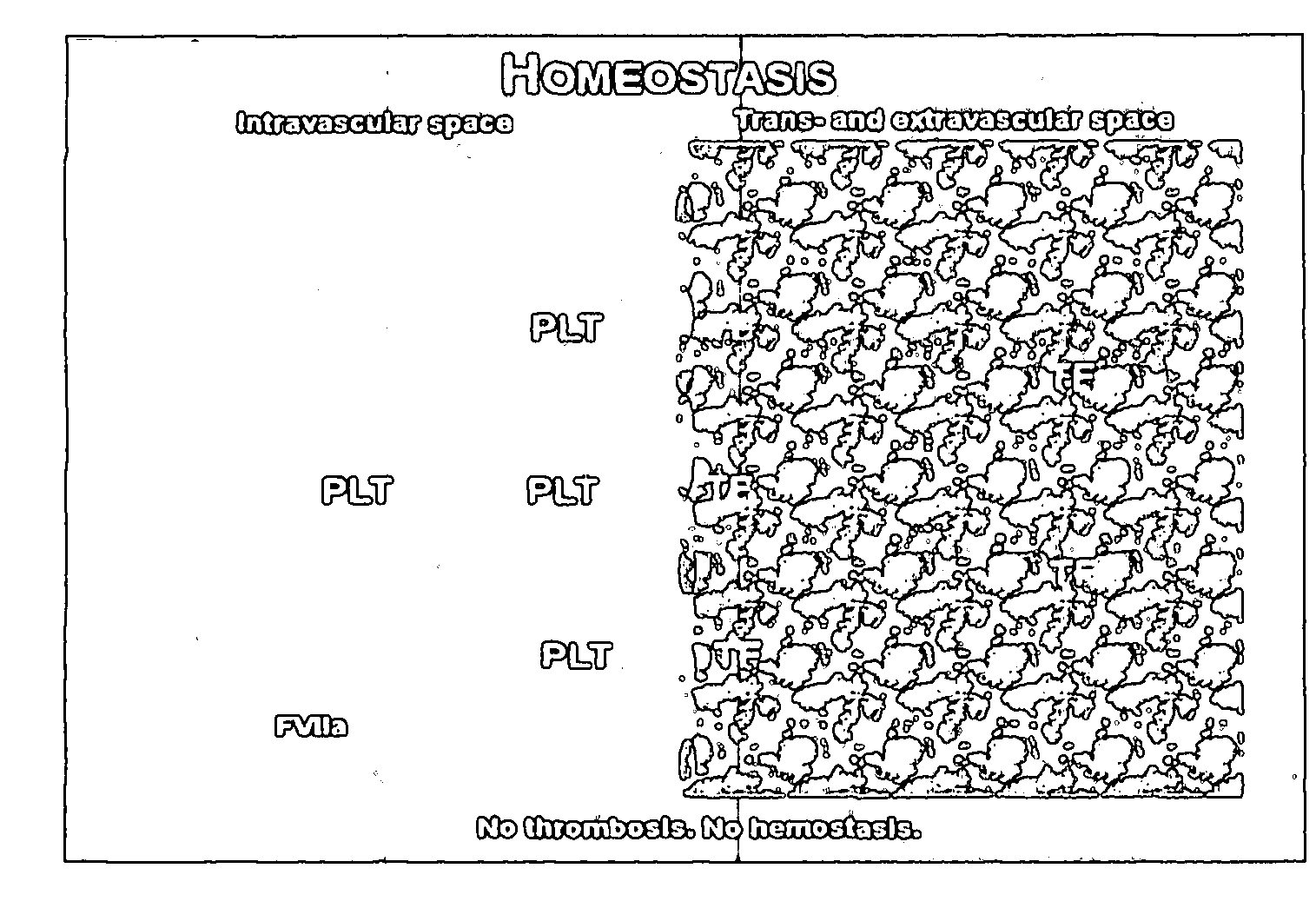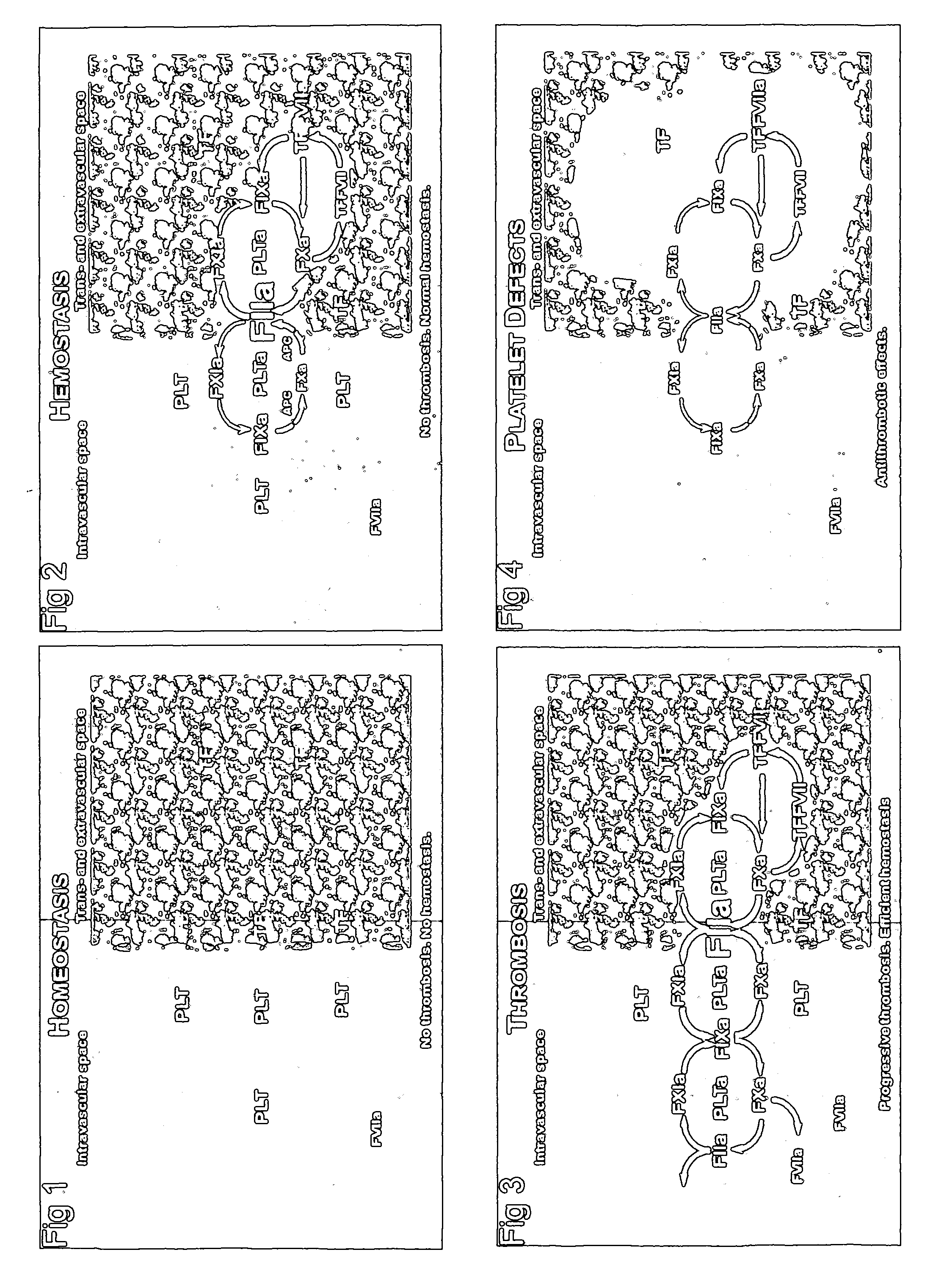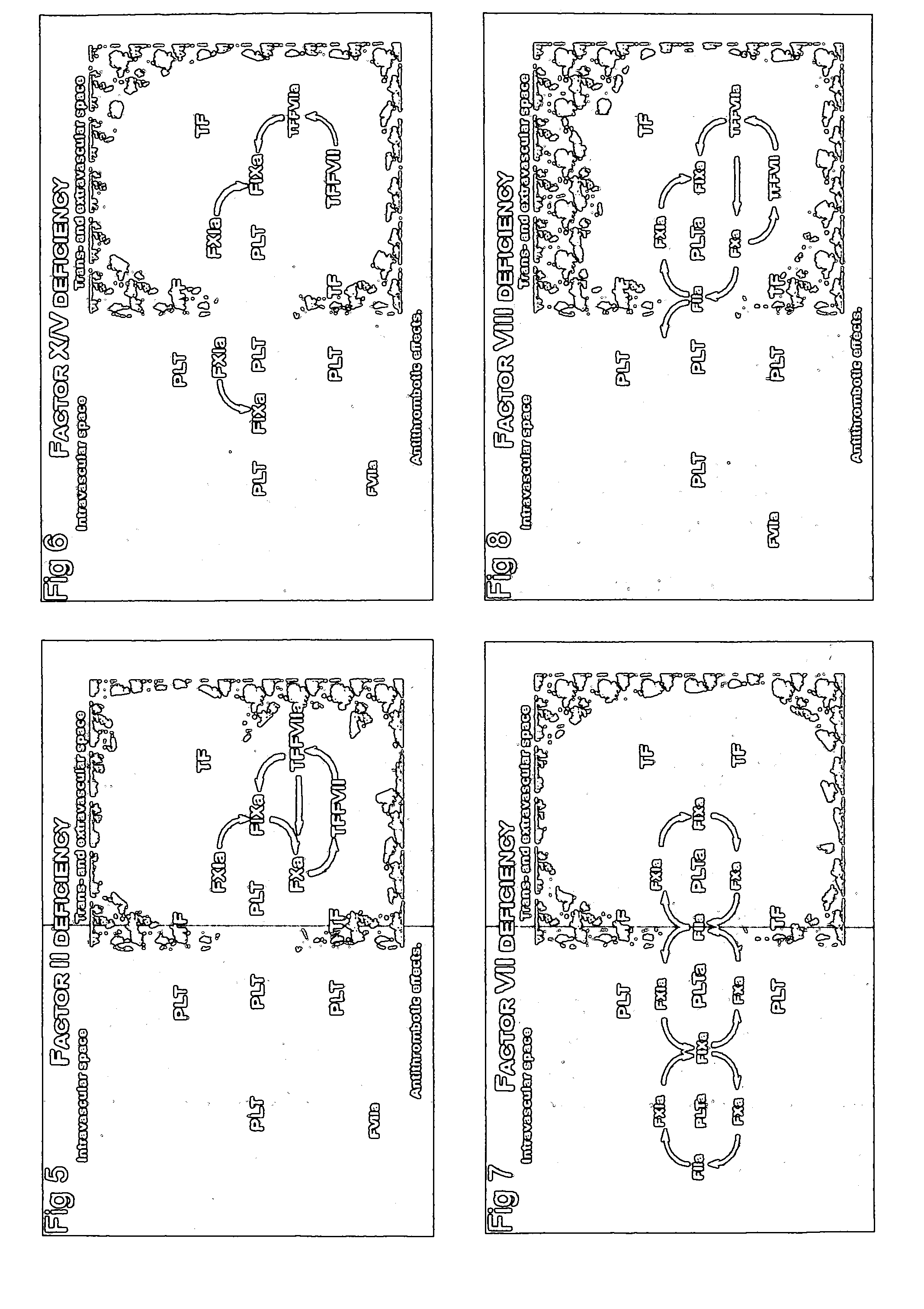Anti-Thrombotic Agents
a technology of anti-thrombosis and anti-thrombosis, which is applied in the direction of drug compositions, peptides, cardiovascular disorders, etc., can solve the problems of significant compositional, structural and formation differences between blood clots, and compounds with pharmacodynamic effectiveness in animal models that turn out to be unsafe in humans, so as to improve hemostatic safety and prophylactic or therapeutic efficacy in thrombosis treatment and prevention, and increase risk.
- Summary
- Abstract
- Description
- Claims
- Application Information
AI Technical Summary
Benefits of technology
Problems solved by technology
Method used
Image
Examples
examples
[0103]As described above, the useful doses, dosage forms, and therapeutic regimens of this invention cannot be experimentally determined in vitro or in animals under conditions that do not exactly model the incidence, characteristics, and severity of bleeding complications of efficacious doses of existing anticoagulants in corresponding diseases conditions in humans. The following examples describe conditions where usefulness of doses, dosage forms, and treatment regimens are established in human subjects based on safety advantages of reducing FXI activity. One of the methods to achieve reduction of FXI activity is the use of FXI inhibitors. In the examples listed herein the term “FXI inhibitor” refer to and can be replaced with other modalities that reduce FXI activity.
Example of Improved Safety of Reducing FXI Activity Versus Vitamin K Antagonists
[0104]Chronic warfarin prophylaxis or treatment of patients with atrial fibrillation is efficacious and reduces the incidence of ischemi...
PUM
| Property | Measurement | Unit |
|---|---|---|
| Fraction | aaaaa | aaaaa |
| Fraction | aaaaa | aaaaa |
| Fraction | aaaaa | aaaaa |
Abstract
Description
Claims
Application Information
 Login to View More
Login to View More - R&D
- Intellectual Property
- Life Sciences
- Materials
- Tech Scout
- Unparalleled Data Quality
- Higher Quality Content
- 60% Fewer Hallucinations
Browse by: Latest US Patents, China's latest patents, Technical Efficacy Thesaurus, Application Domain, Technology Topic, Popular Technical Reports.
© 2025 PatSnap. All rights reserved.Legal|Privacy policy|Modern Slavery Act Transparency Statement|Sitemap|About US| Contact US: help@patsnap.com



